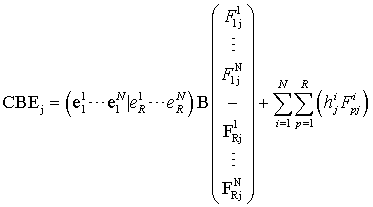 Database Specific
Database Specific Database Specific
Database Specific Abstract
Abstract Abstract
AbstractThe Carbon Dioxide Embodied in International Trade dataset is derived from OECD Input Output Tables linked together using Bilateral Trade Database in goods by industry and end-use category BTDIxE and energy statistics (e.g. fuel-combustion-based CO2 and international electricity transfer), together with other industry statistics, can be used to estimate the effects of international transfers of CO2 emissions. The results highlight differences among countries in production-based and consumption-based emissions.
In this version, 8 indicators are provided for:
- 34 OECD countries
- 23 non member economies
including the BRIICS (Brazil, the Russian Federation, India, Indonesia, China and South Africa)
- the Rest of the World and the EU27 aggregate
- 37 economic activities
- the time coverage includes the years 1995, 2000 2005, 2008, 2009.
Full dataset coverage (i.e. the list of indicators, countries and industries) can be downloaded from the top menu, going to "Export" and "Related Files".
 Data Characteristics
Data Characteristics Data Characteristics
Data Characteristics Contact person
Contact person Contact person
Contact personUsers are encouraged to send their comments, questions, or to signal any apparent errors to STAN.contact@oecd.org.
 Date last updated
Date last updated Date last updated
Date last updated28 August 2013
 Other data characteristics
Other data characteristics Other data characteristics
Other data characteristicsSome additional information can be downloaded from the OECD.STAT menu: go to "Export" and "Related Files".
 Concepts & Classifications
Concepts & Classifications Concepts & Classifications
Concepts & Classifications Key statistical concept
Key statistical concept Key statistical concept
Key statistical conceptTransactions within the international production network and imports and exports of final goods and services can be estimated by using an inter-country economic model based on multi-regional input-output (MRIO) modelling techniques. In order to achieve this, national Input-Output tables are first converted to a common currency (nominal USD) and the import matrices are disaggregated to separate bilateral flows of goods and services. A range of adjustments to deal with measurement issues such as re-exports; unspecified partners and commodities; and missing data, particularly for trade in services, are necessary before the analysis.
The consumption-based emissions of target country j's resident are calculated as:

The production-based emissions of target country j's resident are calculated as:

where hji is emission factor of final consumption of the products of country j’s sector i (hji=θji+φji), eji is industrial emissions intensity of country j’s sector i (eji=εji+ρji+σji), R is number of countries, B is Leontief inverse, N is number of sector and F1ji is final expenditure by country j for the country 1’s product of sector i.
The complete methodology can be found here: CO2 Emissions Methodology Formula
The Carbon Dioxide Embodied in International Trade dataset is derived from OECD Input Output Tables linked together using Bilateral Trade Database in goods by industry and end-use category BTDIxE and energy statistics (e.g. fuel-combustion-based CO2 and international electricity transfer), together with other industry statistics, can be used to estimate the effects of international transfers of CO2 emissions. The results highlight differences among countries in production-based and consumption-based emissions.<br> <br> In this version, 8 indicators are provided for: <br> - 34 OECD countries <br> - 23 non member economies <br> including the BRIICS (Brazil, the Russian Federation, India, Indonesia, China and South Africa) <br> - the Rest of the World and the EU27 aggregate <br> - 37 economic activities <br> - the time coverage includes the years 1995, 2000 2005, 2008, 2009. <br> <br> Full dataset coverage (i.e. the list of indicators, countries and industries) can be downloaded from the top menu, going to "Export" and "Related Files".
28 August 2013
Users are encouraged to send their comments, questions, or to signal any apparent errors to STAN.contact@oecd.org.
Some additional information can be downloaded from the OECD.STAT menu: go to "Export" and "Related Files".
Transactions within the international production network and imports and exports of final goods and services can be estimated by using an inter-country economic model based on multi-regional input-output (MRIO) modelling techniques. In order to achieve this, national Input-Output tables are first converted to a common currency (nominal USD) and the import matrices are disaggregated to separate bilateral flows of goods and services. A range of adjustments to deal with measurement issues such as re-exports; unspecified partners and commodities; and missing data, particularly for trade in services, are necessary before the analysis.<br> <br>The consumption-based emissions of target country j's resident are calculated as:<br> <br> <br> <br>The production-based emissions of target country j's resident are calculated as:<br> <br>
<br> <br>The production-based emissions of target country j's resident are calculated as:<br> <br> <br> <br>where hji is emission factor of final consumption of the products of country j’s sector i (hji=θji+φji), eji is industrial emissions intensity of country j’s sector i (eji=εji+ρji+σji), R is number of countries, B is Leontief inverse, N is number of sector and F1ji is final expenditure by country j for the country 1’s product of sector i.<br> <br>The complete methodology can be found here: CO2 Emissions Methodology Formula
<br> <br>where hji is emission factor of final consumption of the products of country j’s sector i (hji=θji+φji), eji is industrial emissions intensity of country j’s sector i (eji=εji+ρji+σji), R is number of countries, B is Leontief inverse, N is number of sector and F1ji is final expenditure by country j for the country 1’s product of sector i.<br> <br>The complete methodology can be found here: CO2 Emissions Methodology Formula





